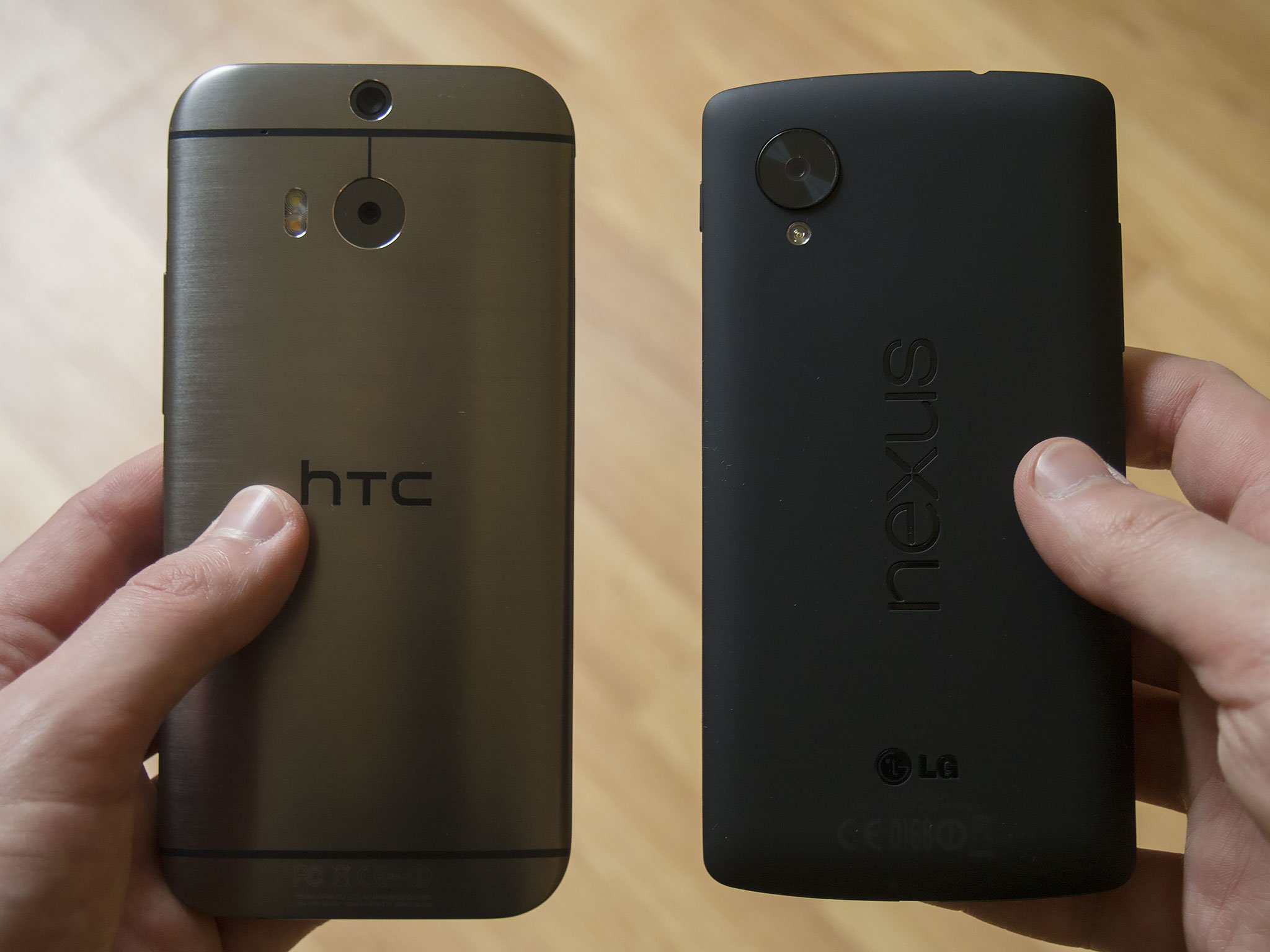
How does HTC’s latest match up to Google’s six-month-old Nexus?
With the launch of the new HTC One M8 last week, the first major Android flagship of 2014 is finally upon us. And as we said in our full review of the phone, the M8 is one of the most impressive Android devices we’ve used. But Google’s own flagship phone, the Nexus 5, is barely six months old, and a whole lot cheaper than an off-contract M8. (Though not that much more expensive than a subsidized M8, we suppose.) What’s more, you’ve got two significantly divergent software and hardware experiences on both handsets — soft-touch plastic and stock Android on the Nexus versus brushed aluminum and Sense 6.0 on the M8 — running on similar internals.
But despite the hardware similarities, there are plenty of differences to mull. So join us after the break as we compared Google’s Nexus 5 to the HTC One M8.
External hardware and build quality
These are both high-end Android phones with big screens and similarly powerful hardware, but the Nexus 5 and HTC One M8 couldn’t be more different on the outside. The M8 sports a beautiful curved aluminum chassis which wraps around its sides, right up to the display, while the Nexus is contained within a lightweight soft-touch plastic shell. There’s no denying that HTC has almost every rival beaten on looks — and the M8’s in-hand feeling is also unlike any other phone. However Google and LG’s approach has its advantages too — the Nexus’s flat sides and matte texture make it easier to grip, if a little boxy, and the use of plastic also means it’s a lot lighter — 130 grams to the M8’s 160.
The M8 feels unlike any other phone, but the plastic Nexus 5 is a little easier to hold.
We’re still adjusting to using the new HTC One as our daily driver, but after a couple weeks we’ve noticed that the metal M8 seems just a little more slippery in the hand than many plastic phones, on account of the polished aluminum unibody. (For the record, we’re using the slicker “gunmetal gray” M8 — one of three flavors available) The trade-off for that premium finish is that you’ll need to be a little more careful palming the M8, especially if you’re using it one-handed. And the HTC One’s lofty dimensions present some challenges too — the two front-facing “BoomSound” speakers add extra millimeters to the phone’s height, as does the space beneath the screen displaying the HTC logo. Though there’s only a small difference in display size — 4.95 inches versus 5.0 — the M8 is a substantial 8.5mm taller. This also makes HTC’s power button, located on the top edge, all the more difficult to hit — though the “Motion Launch” feature, which lets you unlock the phone by tapping or swiping the screen, does mitigate this to some extent.
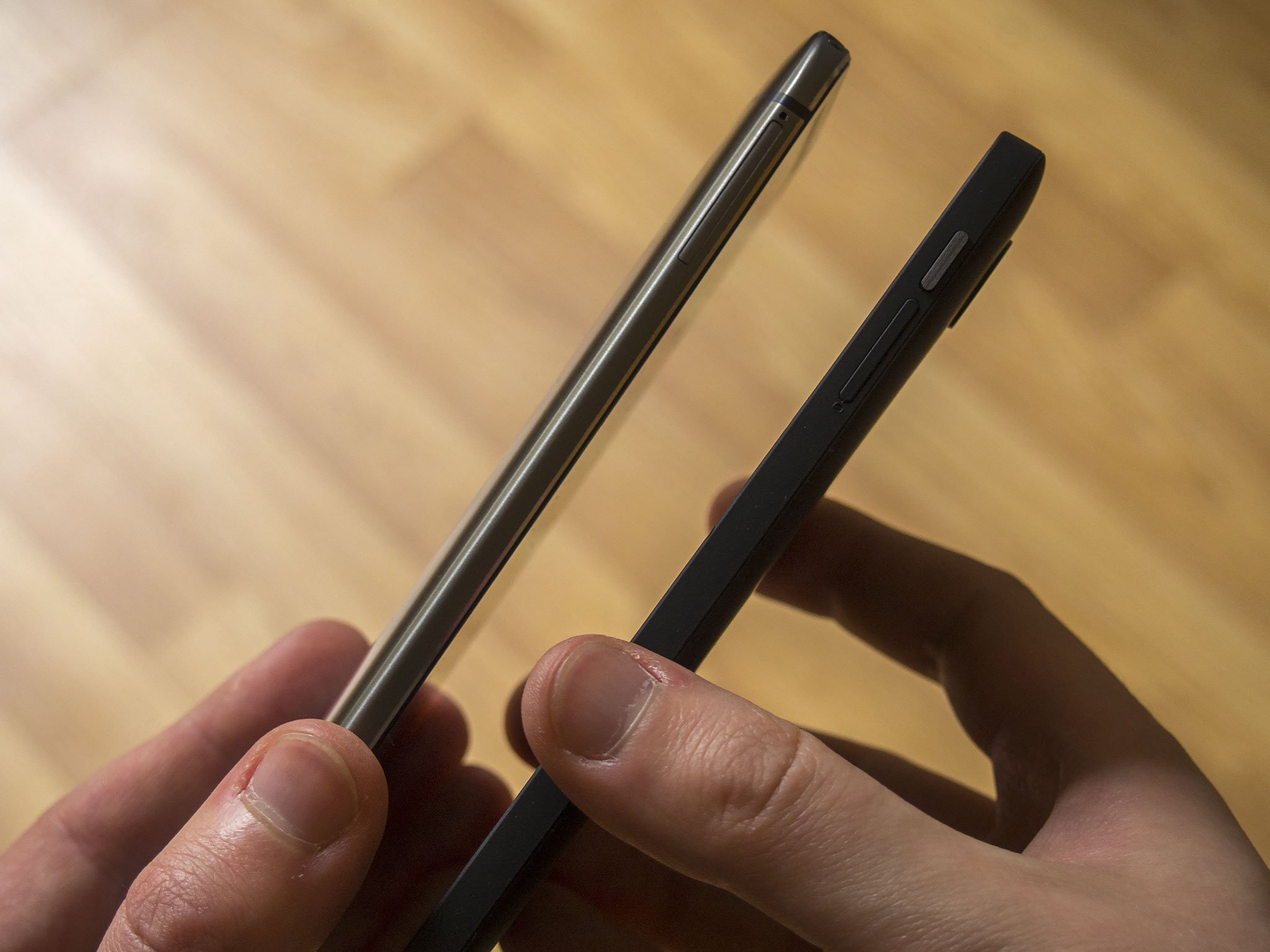
HTC has the more luxurious, attractive product for sure, and for that reason it has to win on build quality. The cheaper Nexus 5 looks more like a reference design, with a muted look intended to serve mostly as a vessel for Google’s mobile OS. The Nexus is a somewhat easier phone to hold and use, but at the same time it offers less exciting, more pedestrian design than HTC’s latest.

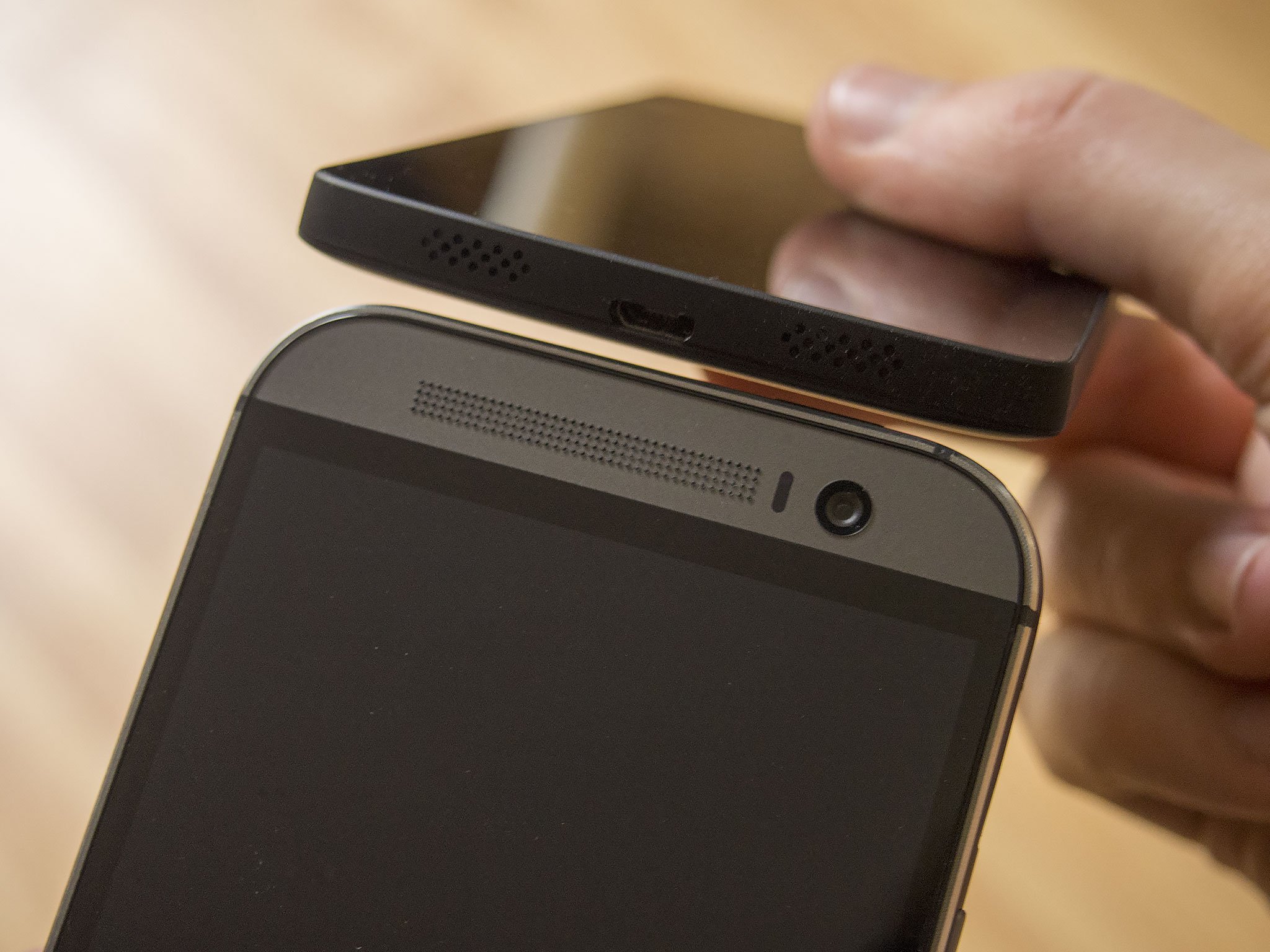
Display and speakers
HTC packs a superior display and less shcizophrenic brightness scaling.
The two phones’ screens — both 1080p IPS LCD panels — are closely matched, and both look fantastic. HTC manages to pull ahead in terms of display quality though, offering a more vibrant image and, according to third-party testing, a wider color gamut too. The M8 covers 110% of sRGB versus the Nexus 5’s 98%, meaning it can represent a wider range of colors.
Brightness levels on both displays are comparable, and we had no problems using either device outside in bright sunlight. One point that’s worth mentioning, however, is that the Nexus 5 seems to crank up its brightness very aggressively, often more than is needed. The M8 manages to balance things a little better, and you can also adjust the level of auto-brightness in the HTC display settings menu.
In terms of color balance, we found whites on the HTC One to be a little cooler, while the same shades on the Nexus 5 appeared warmer. That said, neither display looks unbalanced, and these are differences you’re not going to notice unless you have both phones right next to each other. So it’s a victory for HTC in this area, but the Nexus’s display is still nothing to sniff at.

When it comes to audio quality, however, the M8 wins by a country mile. HTC’s BoomSound speakers return in the M8, offering 25 percent more volume than its predecessor. By comparison the Nexus 5 offers a relatively run-of-the-mill smartphone speaker — that’s right, there’s just one. — that excels in neither bass, volume or clarity.
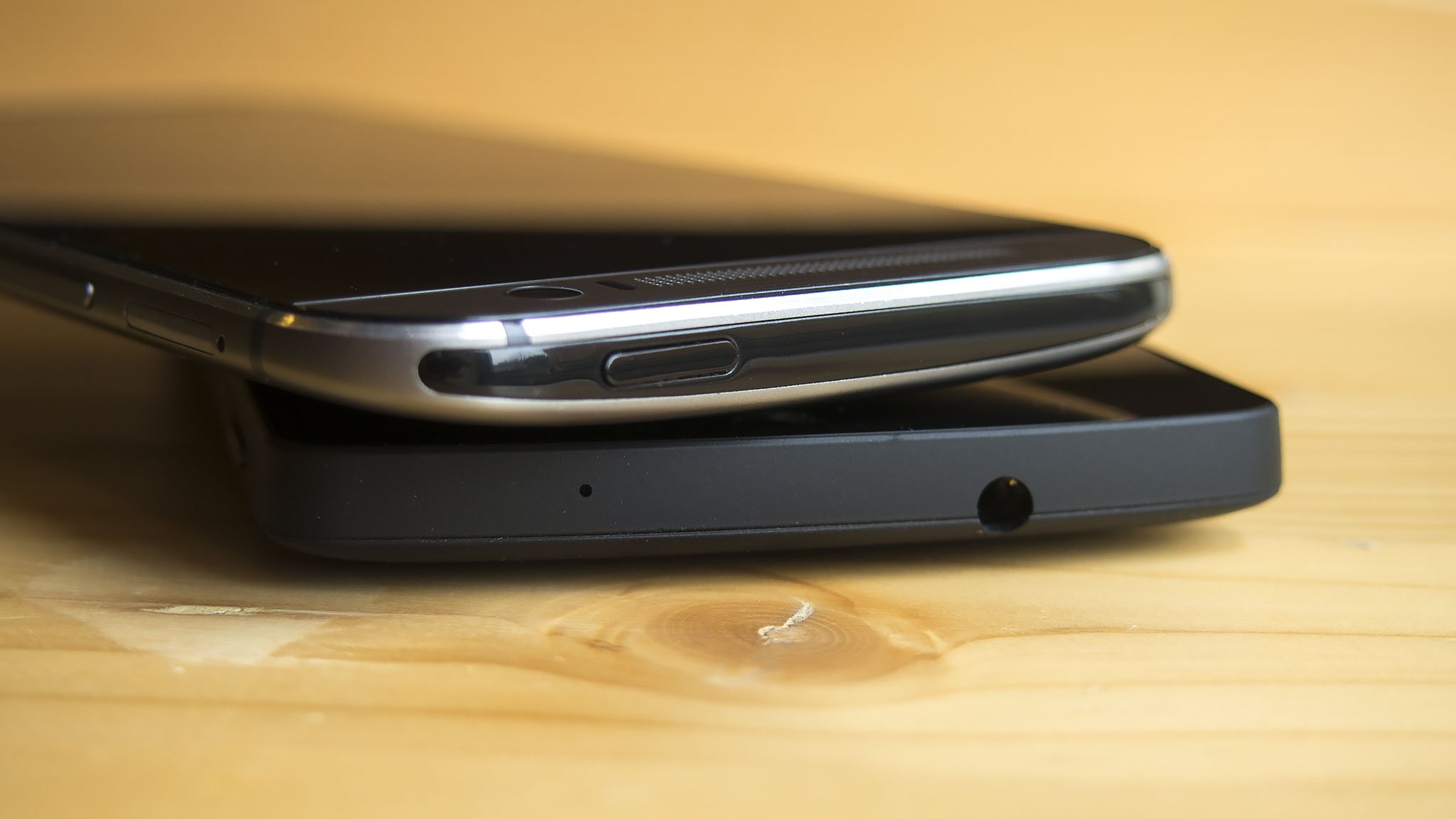
Internal hardware and specs
The internals of the Nexus 5 and HTC One M8 are closely matched, although launching a few months into 2014, the HTC One benefits from Qualcomm’s newer Snapdragon 801 processor. Like the Nexus 5’s Snapdragon 800, it’s clocked at 2.3GHz — but the M8 boasts newer silicon, and with it faster GPU and memory clocks. Another major addition for HTC is the M8’s microSD slot; as is typical of Nexus devices, the N5 provides no expandable storage.
Here’s a quick breakdown of how the specs compare —
| Dimensions | 137.84 x 69.17 x 8.59 mm | 146.36 x 70.6 x 9.35 mm |
| Weight | 130g | 160g |
| Colors | Black, White, Red | Gunmetal Gray, Glacial Silver, Amber Gold |
| Display | 4.95-inch, 1080p, Gorilla Glass 3 | 5.0 inch, 1080p, Gorilla Glass 3 |
| CPU | Qualcomm Snapdragon 800 processor 2.3GHz |
Qualcomm Snapdragon 801 processor 2.5GHz quad-core CPU in Asia/China (MSM8974AC) 2.3GHz quad-core CPU in US/EMEA (MSM8974AB) |
| Platform | Android 4.4 | Android 4.4 with HTC Sense 6, HTC BlinkFeed |
| SIM Card Type | microSIM | nanoSIM |
| Internal Storage | 16/32GB | 16/32GB + microSD up to 128GB |
| RAM | 2GB | 2GB |
| Camera | 8MP camera with OIS, HDR+ mode, Photosphere 1.3MP front-facing camera 1080p video |
HTC Ultrapixel Camera + Duo Camera (4MP) F2.0 aperture and 28 mm lens 5.0MP front-facing camera 1080p video |
| Battery | 2300mAh non-removable | 2600mAh non-removable |
Stock Android 4.4 versus HTC Sense 6
Both devices run Android 4.4.2 KitKat, the latest version of the OS at the time of writing. But like most custom UIs, HTC’s Sense 6 adds visual changes and an array of extra features not found in Google’s base OS.

HTC Sense 6 is a clear evolution of Sense 5, with a home screen experience based around the company’s BlinkFeed social reader, heavy use of the Roboto Condensed font and flat, stylized icons. Sense looks and feels different to vanilla Android for sure, but the similarities are more numerous than you might think, especially since Google adopted a BlinkFeed-like placement for Google Now in its home screen launcher. Brighter, lighter colors and a measured approach to Android customization result in a vision of Android that’s not too far removed from Google’s.
The Nexus 5’s software is somewhat barebones experience, while Sense has a little more visual flair, with prominent placement given to (customizable) accent colors around the UI. Vanilla Android is all about light grays, “card” style UI elements and a more muted palette not dominated by any one hue. And while there’s no single correct way to design smartphone software, we have to say we prefer the look of Sense 6 to stock Android, a testament to HTC’s efforts to refine its interface over the past year.
It’s also hard to separate the two phones in terms of software performance. Touch responses, app load times and scrolling performance are lightning-quick on both devices, and neither is noticeably faster than the other. A win for both, we suppose.
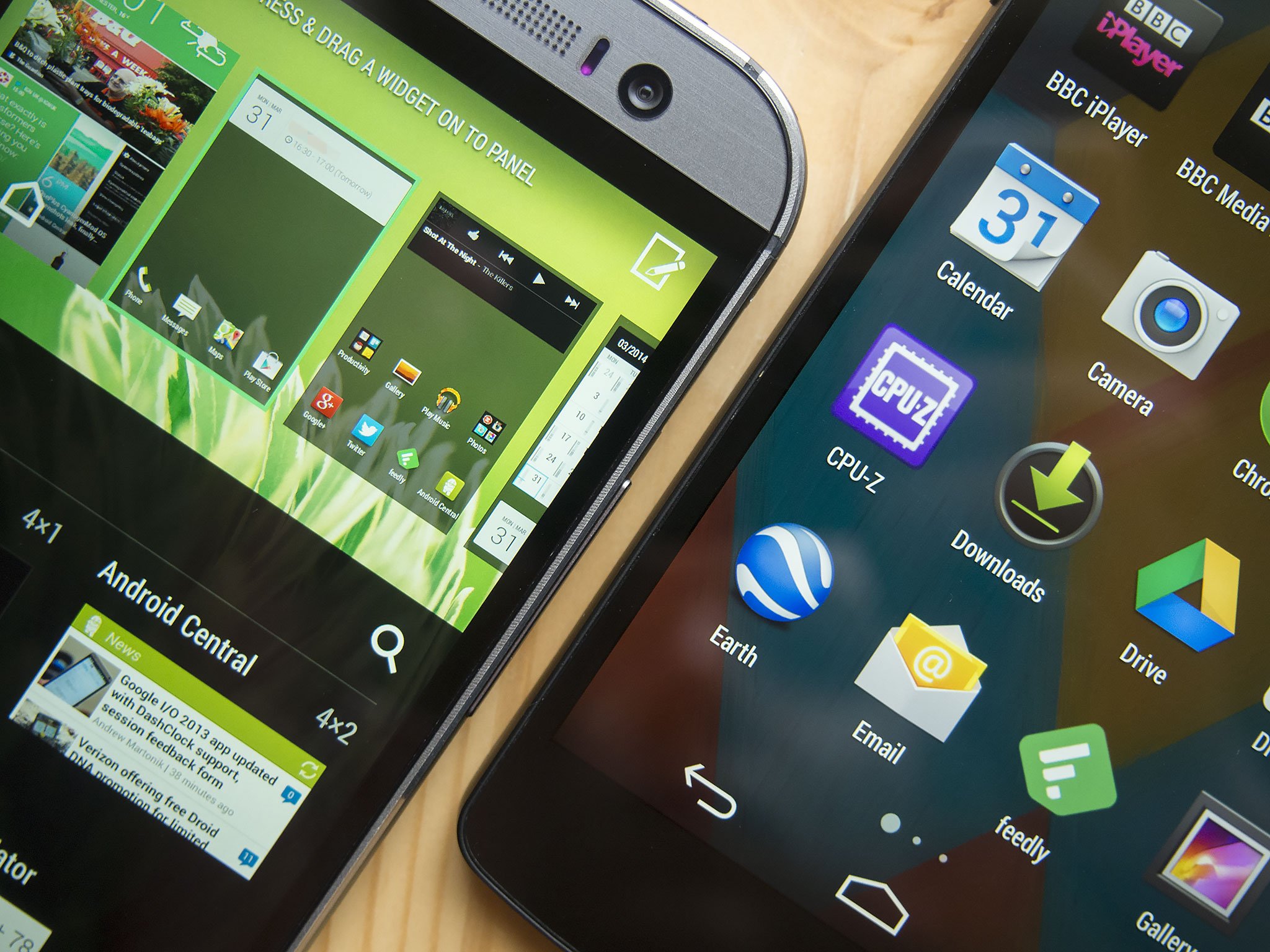
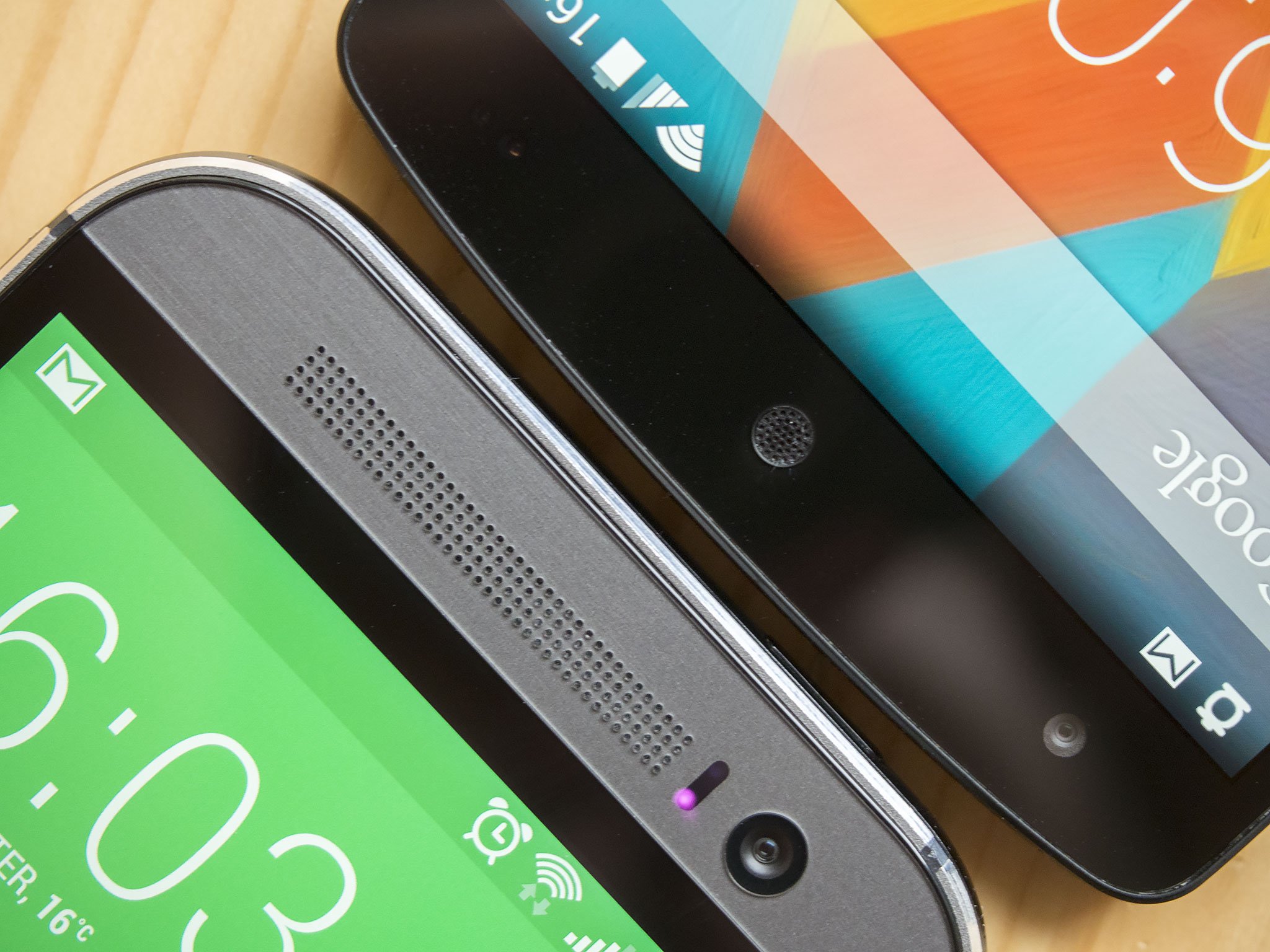
Aside from looks and performance, HTC Sense also offers a much wider array of software features than the Nexus 5, some more useful than others. BlinkFeed moves closer to Google Now with context-sensitive content. HTC’s camera and gallery apps include 3D and defocus effects thanks to the second camera. And there are even more video highlights to choose from — though Google now provides a similar feature through Google+ on all Android phones. What’s more, the M8 offers TV connectivity through its Sense TV app and IR port, a feature missing from the Nexus 5. We’re also loving Motion Launch, which lets you wake up the M8 without reaching for its (admittedly awkwardly-placed) power button.
Stock KitKat looks great, but HTC brings some added visual flair in Sense 6.
In addition, there’s the question of software updates to consider, and on this front the Nexus has a clear advantage. Google’s own-brand handset will always be first with new OS versions, though HTC has demonstrated a renewed focus on pushing out fast updates for Sense phones over the past year. A compromise for those wanting stock Android and fast updates on the M8’s hardware would be the Google Play edition, available now for $700 (the Sense version sells for $650, for what that’s worth). And we do mean a compromise — you’ll miss out on many of HTC’s gallery features, and useful tricks like Motion Launch are unlikely to be included in the GPe firmware. (Though that’s still an unknown until we get a phone in hand.)
For the average user, HTC Sense has a lot to offer in terms of features, customizability and design chops. And for that reason it can claim victory software category. By comparison, the Nexus 5’s more basic UI is clean and uncluttered, which might be more appealing to Android purists. And while many M8 models can be bootloader-unlocked, the Nexus 5 is still the most hackable Android phone out there, for those wanting to tinker with firmware.

Camera comparisons
The camera experiences on the Nexus 5 and HTC One M8 couldn’t be more different. The Nexus has an 8-megapixel Sony sensor with OIS (optical image stabilization) and Google’s basic camera app, supporting Photosphere 360-degree images and the new HDR+ mode. Meanwhile HTC brings a second-generation 4-megapixel “Ultrapixel” camera to the table, along with a secondary camera for capturing depth information, allowing a wide array of special effects to be added to photos.
When it comes to basic photography, it’s a question of speed versus detail.
When it comes to basic photography on these two, it’s a question of speed versus detail. The HTC One’s Ultrapixel camera is lightning-fast, but hampered by its relatively low megapixel count, and we’re still witnessing more chroma noise than we’d like in certain lighting conditions. By contrast the Nexus 5, with its hardware stabilization, is much slower to focus and capture shots. (Part of that’s intentional, as the OIS allows it to keep its shutter open for longer.) And speaking of OIS, the N5’s hardware stabilization gives it a leg-up in video mode too, smoothing out judders for better-looking footage.
Regardless, the Nexus 5 produces some good-looking 8MP shots if you’re willing to wait and don’t mind dealing with a little shutter lag. That’s particularly true of the excellent HDR+ mode, which captures an impressive amount of detail even in challenging lighting conditions. HTC’s HDR mode is better than it was last year on the M7, but still tends to overexpose shots, while the Nexus delivers more realistic-looking HDR pics.







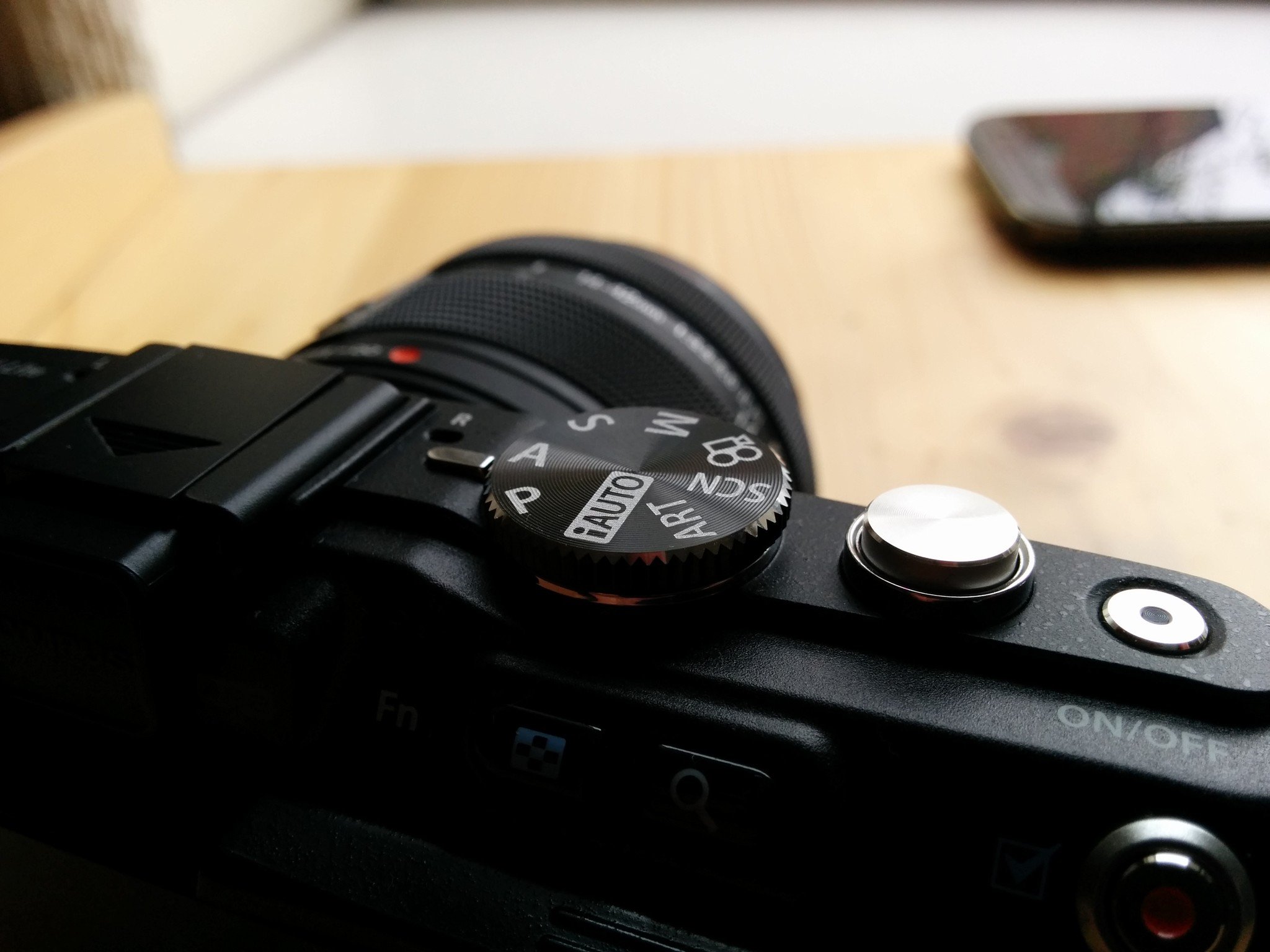







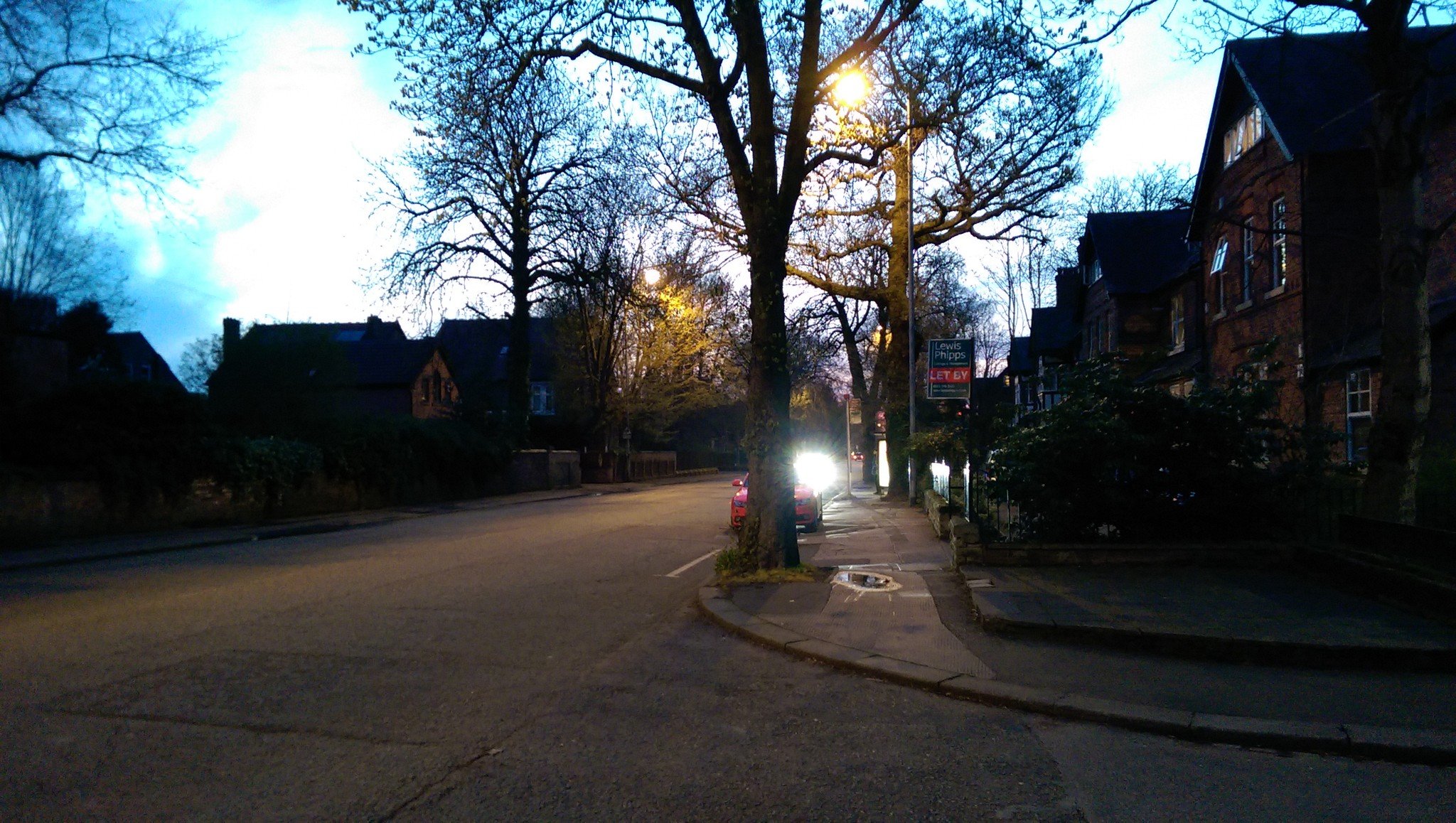
HTC offers its own take on Google’s Photosphere (360-degree) shooting mode this time around, in the form of Panorama 360. Pan 360 is easier to use and quicker than Google’s implementation, but whether through software or hardware, the Nexus 5 seems to take more detailed 360-degree shots.
The win for camera software definitely goes to HTC, though. The Taiwanese company has completely re-tooled its camera UI, giving easy access to a large number of shooting modes (including Zoe mode), and the ability to tweak ISO, EV, white balance and other settings through a new manual mode. And that great software experience doesn’t stop after you’ve taken your photos — HTC offers a wide range of gallery features, allowing you to stylize shots, add filters and 3D effects and arrange them into 30-second montages.
Neither of these phones is a really great all-round camera.
Neither of these phones is a really great all-round camera that’ll match the latest from Samsung and Sony. As was the case last year, HTC is focused on Ultrapixels, Zoes, Duo shots and other features more than megapixels. Meanwhile the Nexus 5 offers good photos, but it’s not for the impatient, nor those wanting to shoot fast-moving subjects.
For the average user, the more versatile HTC One, with its added bells and whistles, is probably the better option. The choice here is between a fast camera that sometimes falls down on image quality, and a slower shooter with the potential to capture more fine detail.

Battery life
The M8 delivers all-day battery life, while the N5 is often on its last legs by early evening.
We’ve never been all that impressed by the longevity of the Nexus 5, which packs a 2,300mAh non-removable battery. Our first impressions didn’t exactly blow us away, and two months on we remained non-plussed. Depending on your usage patterns, the Nexus 5 will get you to the end of the working day, most of the time. But that’s about it, and on strenuous days we’ve too often found the N5 limping its way into the evening.
HTC’s M8, on the other hand, manages to deliver stellar battery performance from a cell rated only 300mAh higher than that of the Nexus 5. In our first week with the M8, we’ve managed to squeeze 16 hours or so of heavy use out of the device’s 2,600mAh juicer, compared to the 12 or so we’d get from the Nexus. And it’s also telling that heavy use doesn’t seem to tank the M8’s battery as much as it does the N5.
The Nexus has a weaker battery, but boasts Qi wireless charging.
One standout feature the Nexus 5 does have going for it, however, is wireless charging, and that compensates for the weaker battery to an extent. If you’re working at a desk all day, for instance, it’s easy enough to throw the Nexus on a wireless charging pad and always have a fully-charged battery when you’re ready to go.
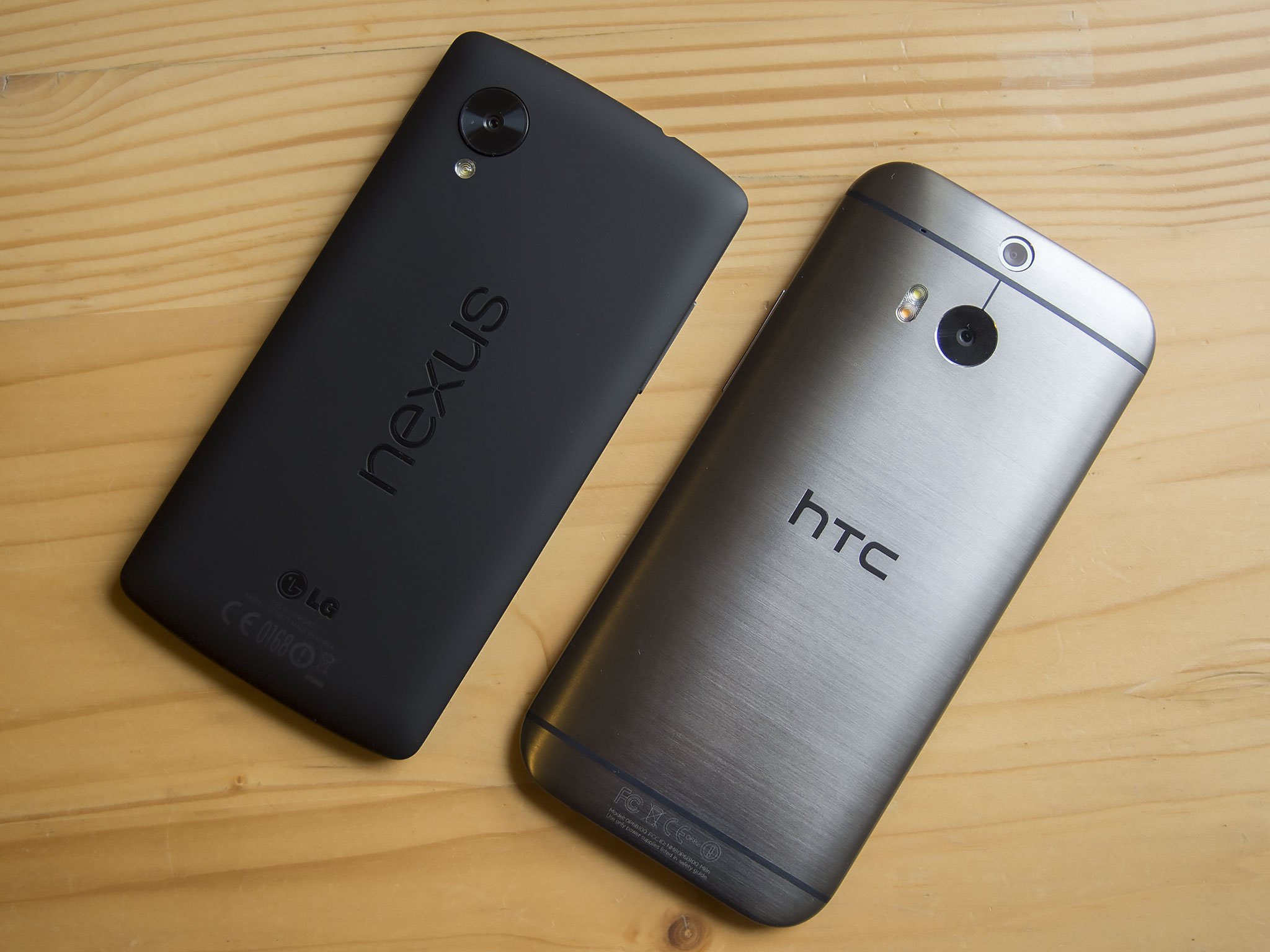
Pricing, availability and wrap-up
The M8 is the better phone, the N5 the better value.
Here’s where the Nexus 5’s various weaknesses come into perspective — that phone costs around half as much as you’ll pay for an off-contract HTC One M8. There’s a lot that the M8 does better than Google and LG’s affordable flagship — build quality, display, sound… and we’d also include software in that list, though that’s a matter of personal preference. And the M8 is absolutely worth its (admittedly high) asking price. Our main reservations have to do with the camera, which is hamstrung by its relatively low megapixel count, and the size and shape of the thing — it’s a tall, somewhat slippery phone that’s actually harder to grip than its predecessor.
On the other hand, there’s still no better high-end phone around the $350 mark than the Nexus 5. For all its imperfections, you’re getting a hell of a lot of smartphone for a comparatively small amount of cash, thanks to Google’s subsidized price. Battery life remains the biggest reason not to pull the trigger on a Nexus 5 — it’s a weak performer in this area, especially compared to the current crop of Snapdragon 800 and 801 phones. As we’ve said, it’s no match for the longevity of HTC’s new flagship. (To say nothing of future phones like the Sony Xperia Z2, with its 3,200mAh cell.)
The Nexus 5 and M8 are opposites in many ways, making this a difficult comparison. In our opinion, HTC has the better phone, with exceptional hardware and software design, a great feature set and epic longevity. But for those wanting to save a few bucks, the sheer value for money represented by the Nexus 5 makes it at least worth a look.
If you twisted our arm, though? We’d have to choose the metal body and all-day battery of the new HTC One.